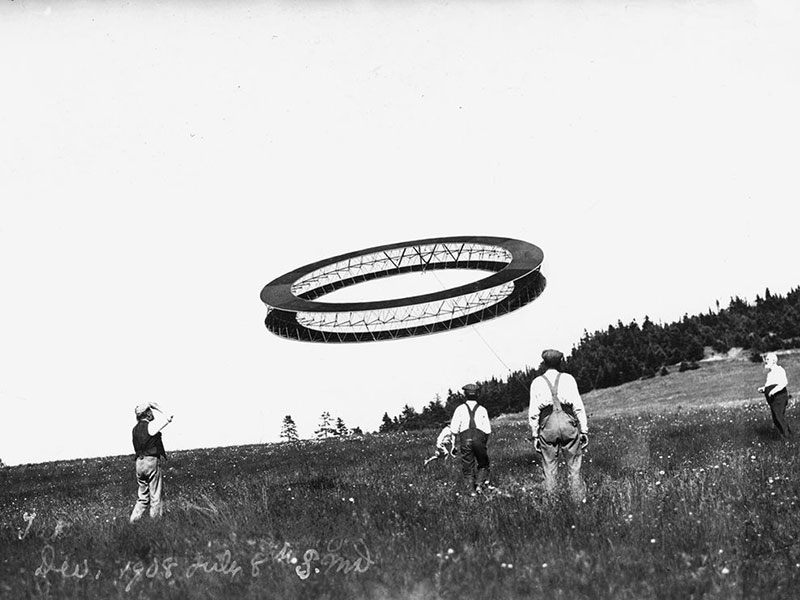Structures to let man fly: Bell’s Tetrahedral kites
Photography from Bell Collection
Between 1895 and 1910 famous inventor Alexander Graham Bell worked on the construction of kites, designing, building and testing flying structures by himself. His main aim was to build kites powered by an engine able to let man fly, strong but light enough to not collapse from his own weight. After experimenting with several shapes (boxes, triangles, hexagons), Bell perfectioned kites made up of several small tetrahedral cells which showed an incredible strength even if built with ultra-light wooden sticks. As Bell explained “It is not simply braced in two directions in space like a triangle, but in three directions like a solid“.
The first controlled man-flight on a Bell’s kite happened in 1907 with a 3,393 tetrahedral cells structure called the “Cygnet”. The 12,2 m long, 91 kg heavy vehicle was towed by a steamer offshore near Baddeck, Nova Scotia and carried a man, Thomas Selfridge, 51,2 m above the water. The Cynet flew for a few minutes before hitting the water revealing the difficulties in controlling it.
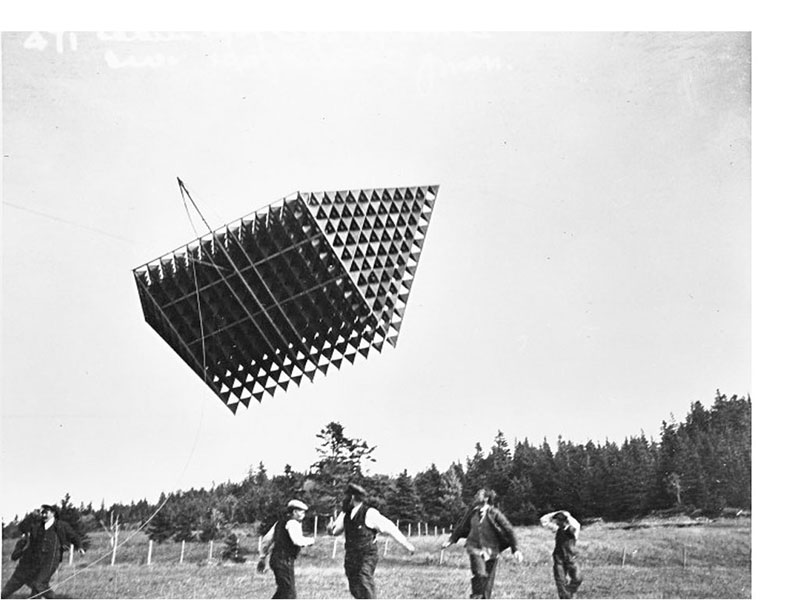
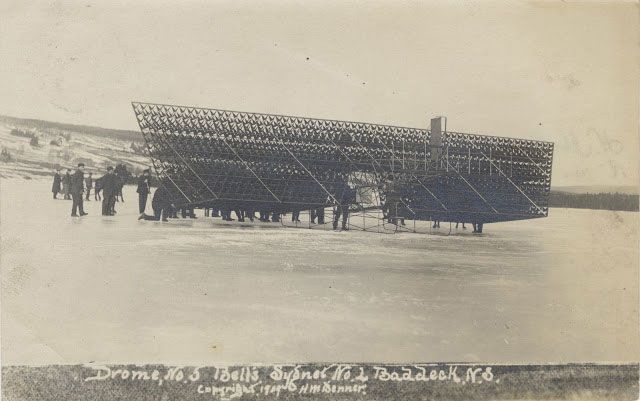
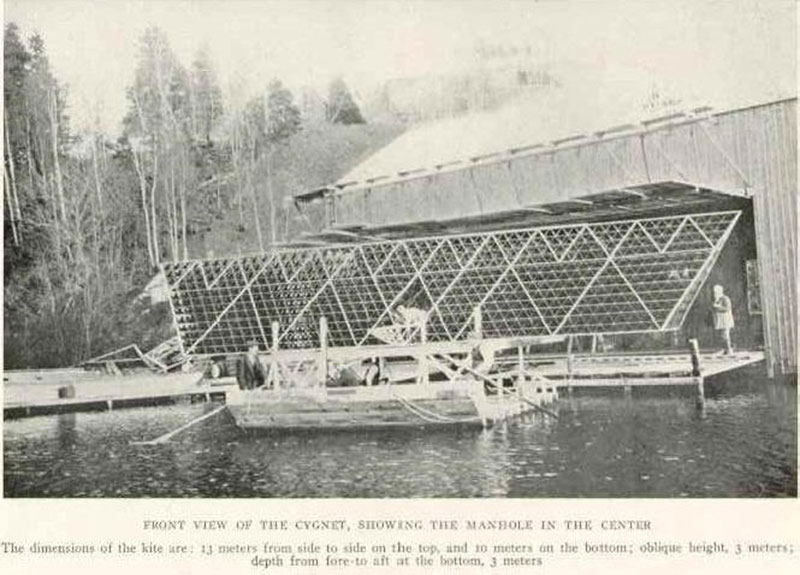
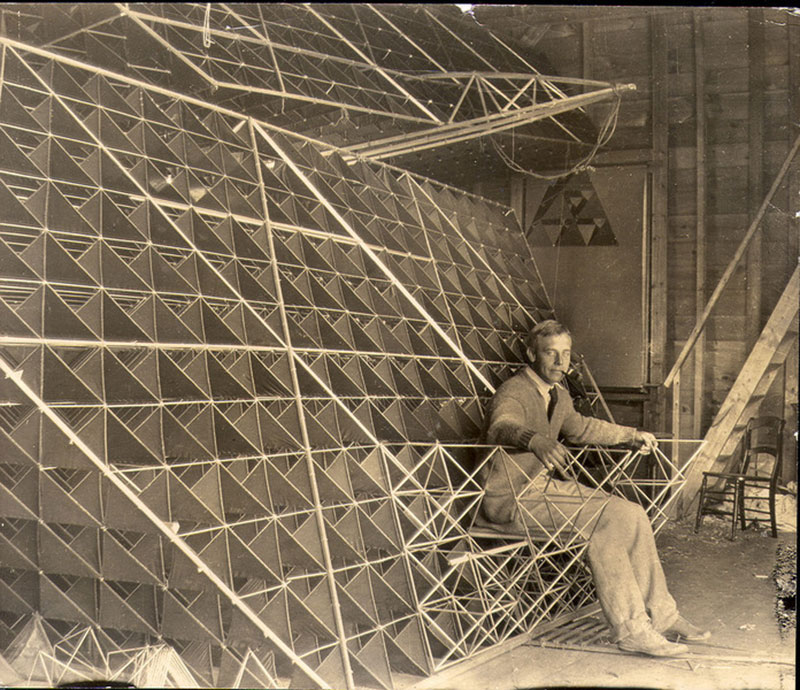
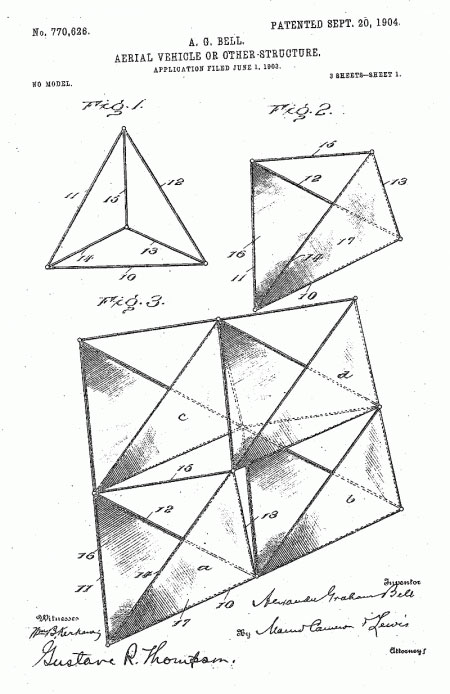
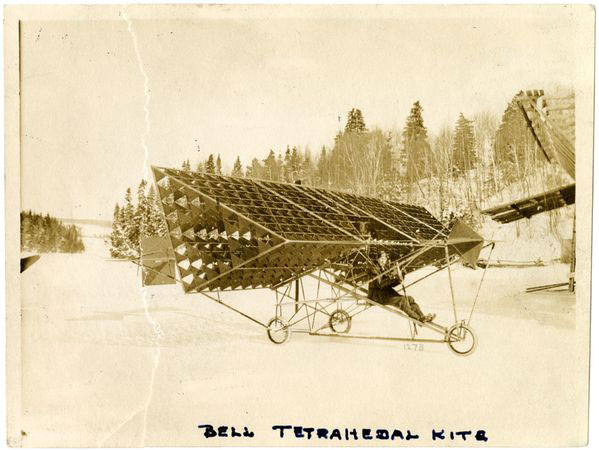
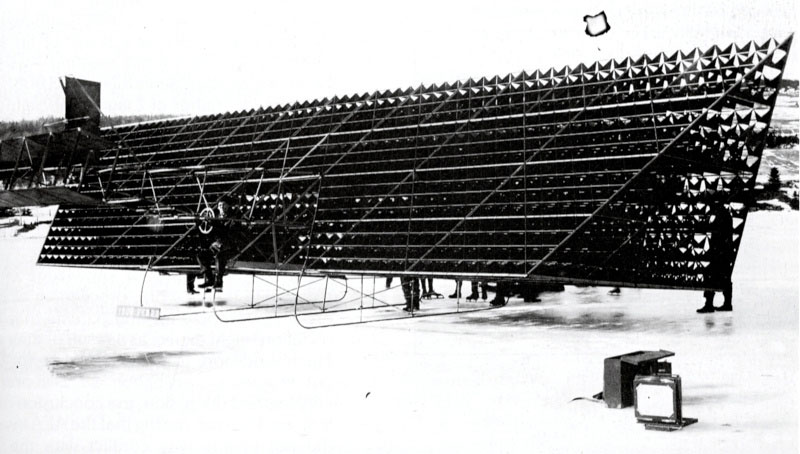
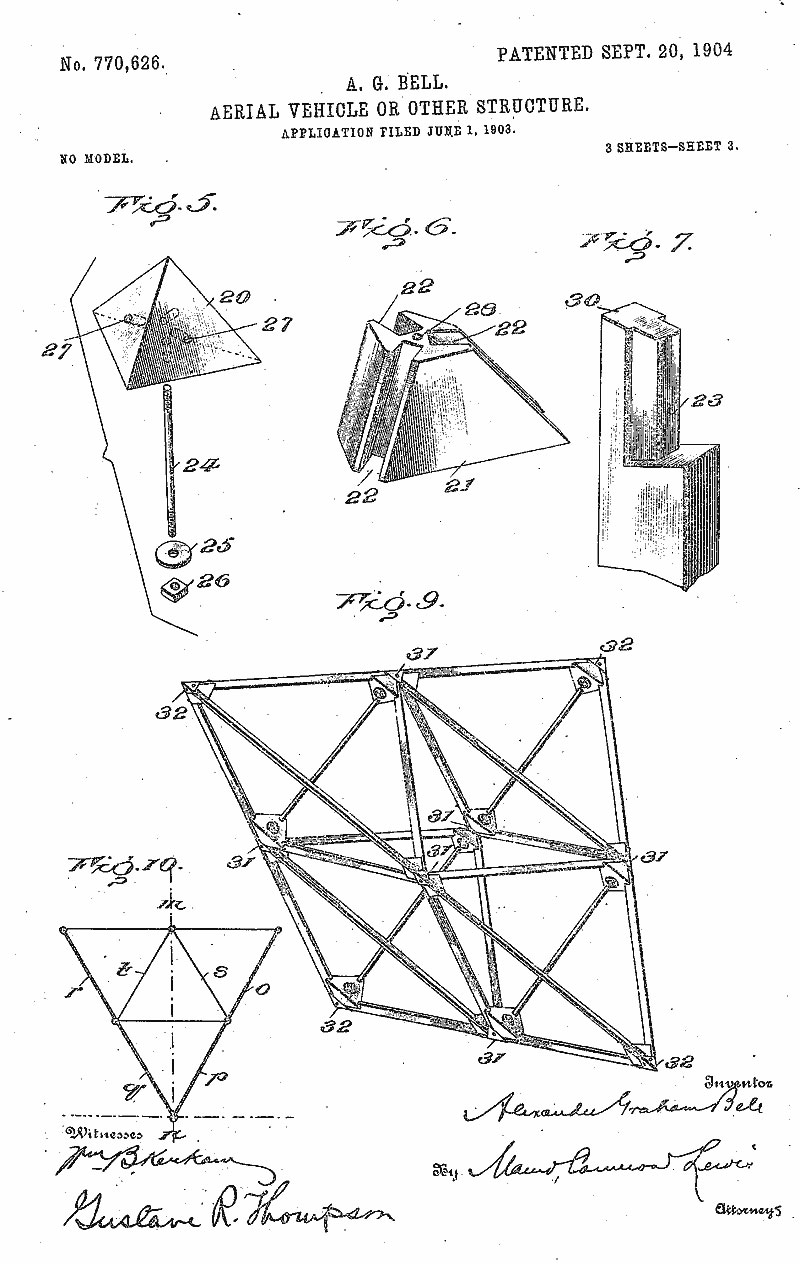
Update:
Vibok Works suggested us this fantastic video of a contemporary tehtraedral cells kite (Heather & Ivan Morison’s Little Shining Man):
Further reading:
Popular Science Monthly/Volume 64/December 1903/The Tetrahedral Kites of Dr Alexander Graham Bell
Images via:
Kite Patents
Oobject
© New British Art



